The Kaveri Refresh 'Godavari' Review: Testing AMD's A10-7870K
by Ian Cutress on June 1, 2015 11:59 AM ESTProfessional Performance: Linux
Built around several freely available benchmarks for Linux, Linux-Bench is a project spearheaded by Patrick at ServeTheHome to streamline about a dozen of these tests in a single neat package run via a set of three commands using an Ubuntu 11.04 LiveCD. These tests include fluid dynamics used by NASA, ray-tracing, OpenSSL, molecular modeling, and a scalable data structure server for web deployments. We run Linux-Bench and have chosen to report a select few of the tests that rely on CPU and DRAM speed.
C-Ray: link
C-Ray is a simple ray-tracing program that focuses almost exclusively on processor performance rather than DRAM access. The test in Linux-Bench renders a heavy complex scene offering a large scalable scenario.
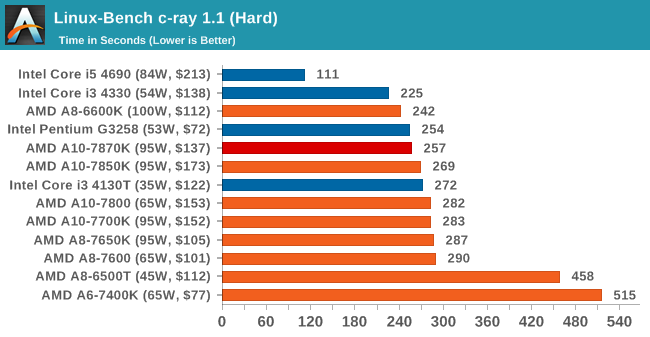
NAMD, Scalable Molecular Dynamics: link
Developed by the Theoretical and Computational Biophysics Group at the University of Illinois at Urbana-Champaign, NAMD is a set of parallel molecular dynamics codes for extreme parallelization up to and beyond 200,000 cores. The reference paper detailing NAMD has over 4000 citations, and our testing runs a small simulation where the calculation steps per unit time is the output vector.
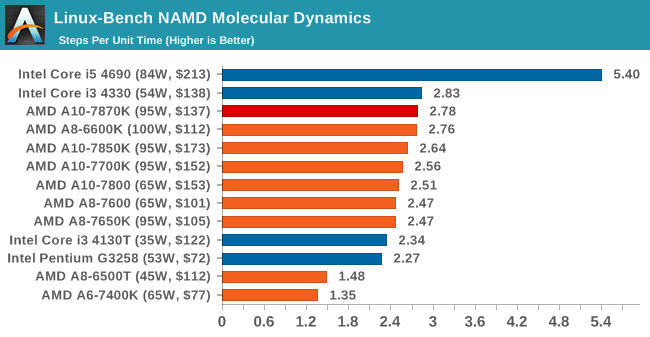
NPB, Fluid Dynamics: link
Aside from LINPACK, there are many other ways to benchmark supercomputers in terms of how effective they are for various types of mathematical processes. The NAS Parallel Benchmarks (NPB) are a set of small programs originally designed for NASA to test their supercomputers in terms of fluid dynamics simulations, useful for airflow reactions and design.
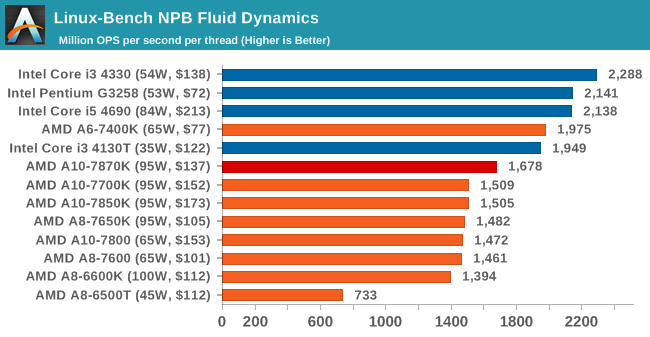
Redis: link
Many of the online applications rely on key-value caches and data structure servers to operate. Redis is an open-source, scalable web technology with a strong developer base, but also relies heavily on memory bandwidth as well as CPU performance.
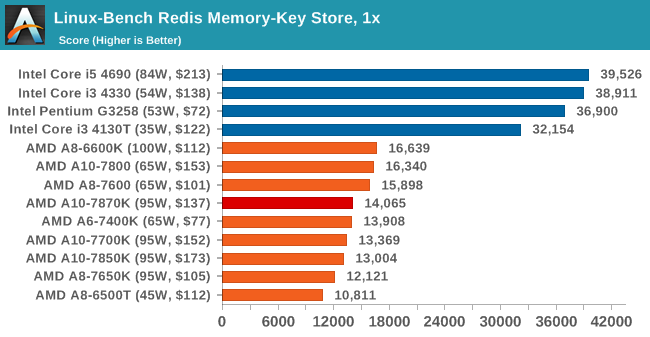

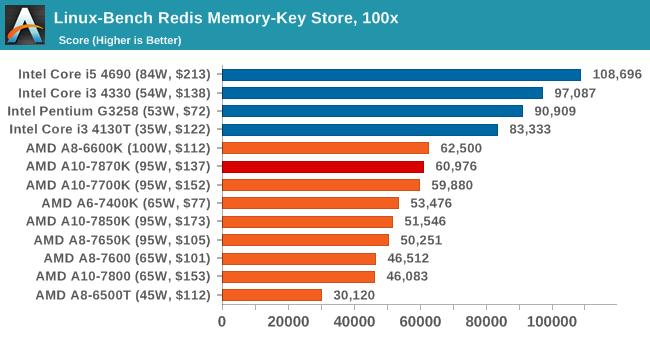










140 Comments
View All Comments
bji - Monday, June 1, 2015 - link
"the release of a Kaveri Refresh line of APUs is not going to set the world alight in a miasma of queues outside brick and mortar stores or bundles of pre-orders"That is one of the weirdest sentences I have ever read in a tech article. WTF does this even *mean*???
Tegeril - Monday, June 1, 2015 - link
~"People wont be lining up around the world to buy them when they are released"Set the world alight - suggests attracting lots of attention to something
Miasma of queues - oppressive lines
CZroe - Monday, June 1, 2015 - link
"Miasma" implies formless emanations, like multiple lines snaking together to/from a dynamic mass (crowd).nikaldro - Monday, June 1, 2015 - link
Long story short : nobody will get their ass all excited about thisfteoath64 - Wednesday, June 3, 2015 - link
Yeah, with the existing Kaveri, one can already overclock past the rated speed of this Godavari chip. GPU set to 950Mhz is wicked. Thats 10% over this chip, still with 512 cores.ggathagan - Wednesday, June 3, 2015 - link
Well, if that remains consistent, then Godavari should be able to overclock the GPU to 1142MHz.Even more wicked...
Ken_g6 - Monday, June 1, 2015 - link
Basically, the response to this release won't be like the response to the release of a new iPhone.merikafyeah - Tuesday, June 2, 2015 - link
Essentially, panties will remain dry.stephenbrooks - Saturday, June 6, 2015 - link
Come for the reviews, stay for the odd phrasing.jospoortvliet - Monday, June 1, 2015 - link
If the Kraken and Sunspider test results are correct, they are nonsense... The extra 100 megahertz makes the 7870K 15% slower on Sunspider compared to the 7850K, while it is an equal percent FASTER on Kraken.Either the test is broken or something very weird is going on - really, this makes no sense. Unless, of course, the variety in the tests is easily +/- 35% but in that case - why even bother running it?